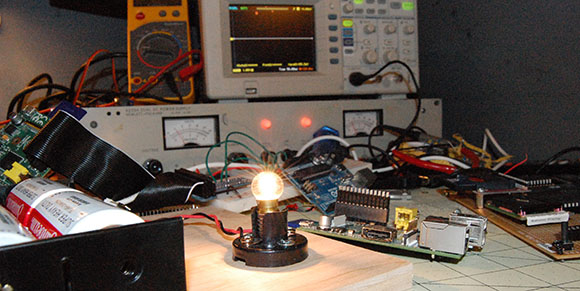
A photomultiplier tube is a device used to measure very low levels of light. It’s a common tool of particle physics when trying to detect just a few photons. It turns out that running a tube at room temperature will not provide the best results. To improve the accuracy and sensitivity of his equipment [David Prutchi] built this thermoelectric photomultiplier tube cooling rig.
You can’t actually see the tube in this image but it looks similar to a vacuum tube or Nixie tube. The difference being that the components inside the glass dome make up the detector instead of an amplifier or filament display. To make a physical interface with the glass [David] wrapped it in magnetic shielding and finished with a layer of aluminum foil tape. This cylinder was then snugly fit inside of an aluminum heat sync. two Peltier coolers were attached to the outside of the heat sync, using Arctic Silver thermal compound to help transmit heat. A thermocouple was also added to monitor the temperature of this first stage of cooling. All of this fits into an aluminum enclosure which was filled with expanding spray foam before having a trio of fan-cooled heat syncs attached to it.
















